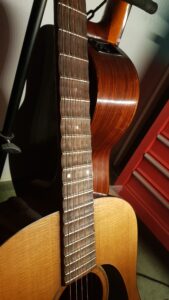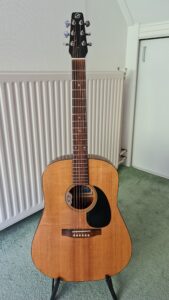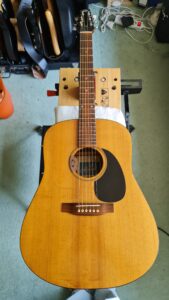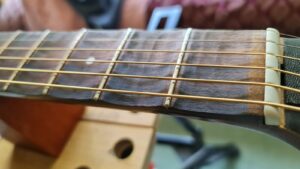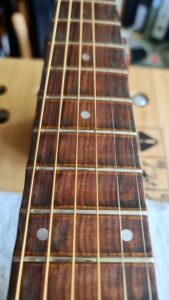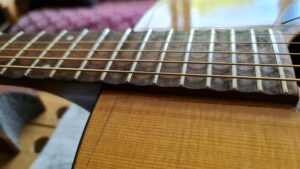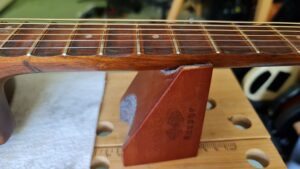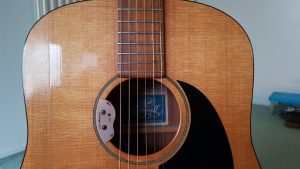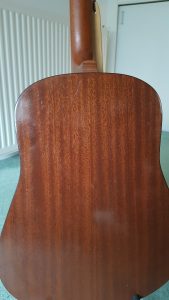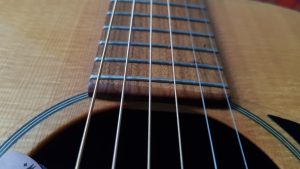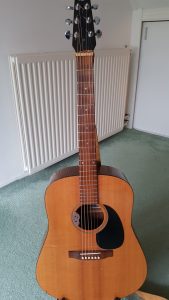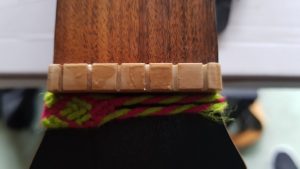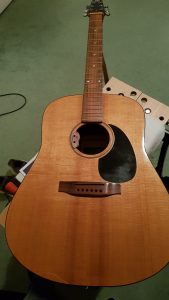After scalloping the neck:
Original state:
2018 update: This guitar was bought new in the early 90’s in LA. It traveled with me to Santa Cruz for a couple of years, to Portugal, to Boston, and finally to Amsterdam where it’s mostly been at my daughter’s for the last 3 years. It’s got a mahogany body and neck and a cedar top. The only defect was a slight amount of top lift behind the bridge but not affecting its performance, and the normal wear and tear scratches. I finally got around to restoring a few things:
- the whole body, neck and fingerboard needed cleaning
- two nut slots needed to be filled with epoxy and reshaped
- string posts tightened
- saddle reshaped and lowered a tiny amount
- frets re-crowned and polished
- a small hole in the top lacquer filled with super glue
- strung with Gibson Super Ultra Lights 10s (Phosphor Bronze)
2022 update: Decided to scallop the neck and did it manually without too much care. The friezes I had were rather coarse and they sometimes bit too fast in the wood, this completely removed the fifth fret marker inlay on the fingerboard 🙂 Also another problem is that the frieze often grabbed and slipped into the adjacent fret, this put some marks but in general all the frets are still reasonable.
2023 update: Replaced the nut since the epoxy filled was causing problems with tuning and intonation. The Tusq PQ-6135-00, although thinner and taller, has resolved those problems. However I will need to re-lower it by about 0.5-1mm on the high E side and about 0.25mm on the lower E side.
